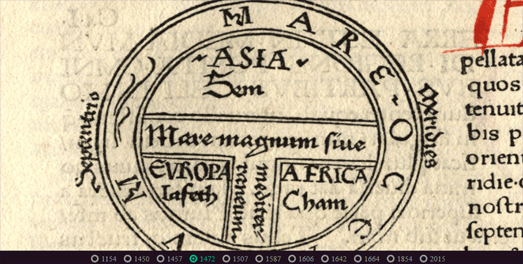Mappa Monday

In the seventh century the scholar Isidore of Seville wrote an encyclopedia of universal knowledge. His 'Etymologiae' included a description of the known world. Some medieval manuscripts of Etymologiae include a map based on Isidore's description of the world. These are widely known every bit T in addition to O maps.
You tin laissez passer on notice persuasion a 15th century interpretation of a T in addition to O map on Mappae Mundi, my collection of vintage populace maps. To persuasion the T in addition to O map but click on the '600' engagement inwards the map carte du jour in addition to await for the map to load.
T in addition to O Maps are uncomplicated round down maps depicting one-half of the Earth. The antipodes, beingness unknown, are non shown. The uncomplicated depiction of the known populace includes 3 continents Asia, Africa in addition to Europe. Asia (east), which is twice the size of the other 2 continents, is shown at the overstep of the map. Jerusalem is frequently depicted inwards the substance of the map (although non inwards this T in addition to O map).
The T in addition to O map I've included inwards Mappae Mundi comes from the Etymologiae inwards the Kraus Map Collection, at the Harry Ransom Center, University of Texas.



